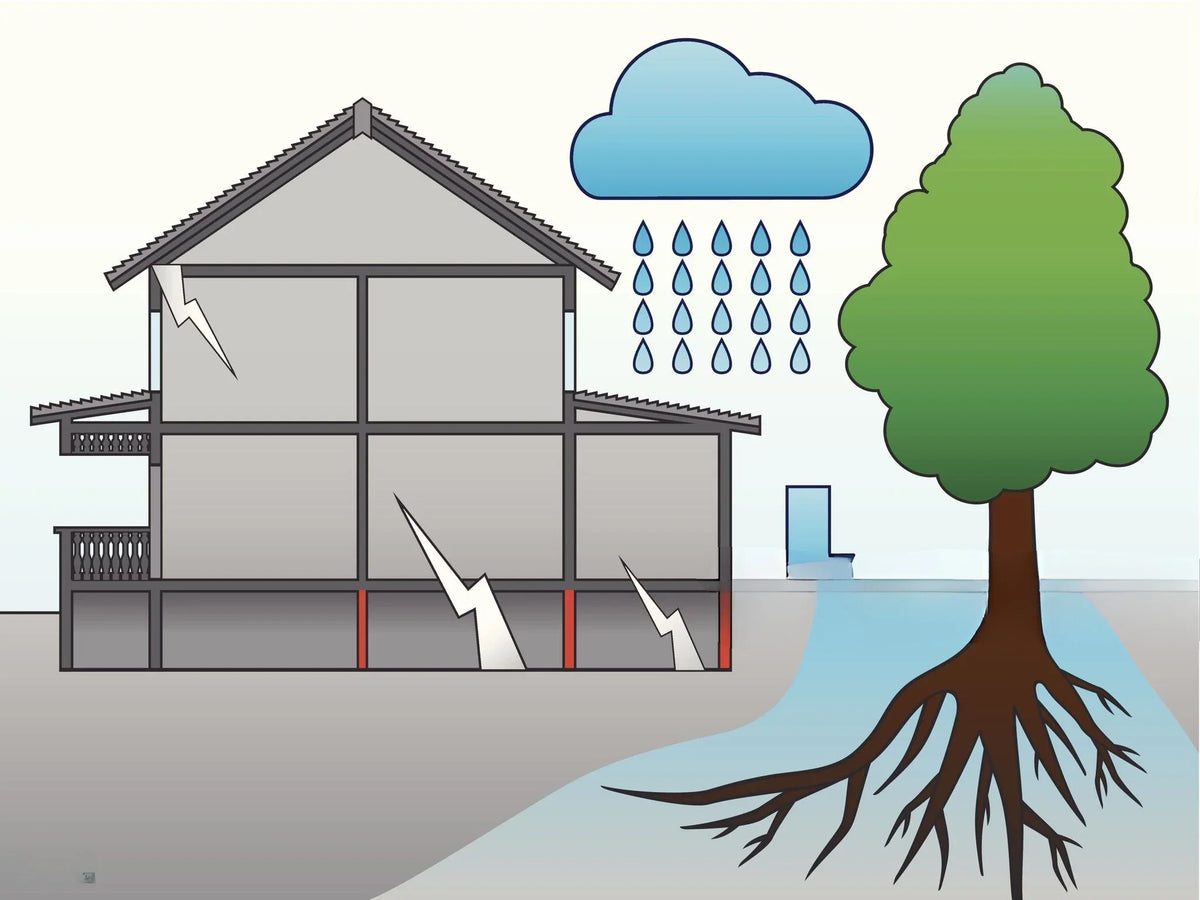Planning an eco-friendly garden doesn’t require vast land or expensive materials just smart choices and the right tools. On Friendly Turtle’s EcoBlog, we explore how digital tools like GardenBox 3D help visualise layouts, test sustainable planting schemes, and reduce resource waste. By understanding your microclimate, choosing native plants, and using compost and recycled materials, you can build a self-sustaining garden that supports biodiversity and thrives over time. Rainwater harvesting, natural mulching, and zone planning help reduce water use and effort. Even the smallest garden can be transformed into a low-maintenance, eco-conscious space that benefits you and the planet. With careful preparation and thoughtful design, your outdoor area becomes not only greener but also more enjoyable, season after season.
Share your articles with us and get published! Reach out at hello@friendlyturtle.com.
Sustainable Foundation Solutions: Building a Greener, Safer Future

You recognize that stable foundations are the key to enduring structural security. You require precise engineering and reliable construction techniques that prevent costly future repairs. They safeguard your investment and ensure a safe, lasting living environment.
Facing shifting soils or water intrusion, you may observe your structure weakening gradually. They result in damage if ignored, so you must act now to secure stability and protect your valuable property effectively.
Ensure your foundation remains steadfast for decades by utilizing expert services. For reliable support, consider our underpinning and restumping services that reinforce stability and extend the life of your structural investments.
Structural Foundation Repair
Proper foundation repair plays a critical role in ensuring long-lasting structural security while protecting your home against environmental challenges and age-related deterioration.
This section outlines key aspects of foundation repair. Explore the roles, techniques, and maintenance tips that ensure lasting support for your structure.
- Structural Engineers: They conduct thorough inspections and design lasting solutions that comply with safety codes.
- Foundation Repair Companies: They provide practical fixes to address immediate issues and restore stability.
- Foundation Types: Pier and beam or block and base foundations each require different repair methods.
- Common Causes: Soil instability, water damage, and aging materials often trigger foundational problems.
- Assessing Damages: DIY checks and professional evaluations reveal subtle cracks and misalignments.
- Repair Techniques: Underpinning, mudjacking, and waterproofing methods restore your structure safely.
- Preventive Maintenance: Proper drainage, moisture control, and regular inspections avert future issues.
- Immediate Action: Early intervention and expert consultation reduce long-term repair costs.
Keeping your foundation secure requires attention to detail and prompt actions.
Detecting Damage Indicators
Detecting damage indicators early empowers you to take timely action and secure your home's foundation. Learn to recognize cracks, gaps, uneven surfaces, and other warning signs.
Visible Cracks and Gaps
Notice any visible cracks in walls, floors, or windows. These cracks often hint at foundation settlement that requires a thorough inspection for lasting safety.
Sticking Doors and Uneven Floors
Sticking doors and uneven floors are clear indicators your structure is under stress. It is time to seek a professional evaluation rather than delaying repairs.
Water Damage and Mold Growth
Water damage, accompanied by musty odors and mold growth, often points to hidden foundation issues. Quick intervention can stop further deterioration and repair costs.

Causes of Foundation Failure
Foundation failures often arise from multiple causes. Recognizing these issues early helps you to implement preventive measures and avoid serious structural damage.
Consider the following common causes that challenge the stability of your foundation; understanding these helps you avoid future structural concerns.
- Poor Soil Conditions: Unstable soil, especially clay, expands and contracts, leading to settlement and cracking issues.
- Water Damage: Improper drainage and leaks create moisture buildup that gradually erodes soil support.
- Poor Construction: Inadequate design and substandard materials can result in long-term foundation weakness.
- Natural Settlement: Gradual soil compaction over time may unevenly affect your foundation's alignment.
- Additional Stressors: Tree roots and severe weather events impose extra pressure that compounds stability issues.
Accurate identification of these causes empowers you to arrange timely professional evaluations and implement robust repair strategies ensuring your home stays safe.
Repair Techniques Overview
Understanding foundation repair techniques changes your approach to structural issues. Choosing the best method depends on your damage level, foundation type, and long-term security goals.
Slab Jacking Method
Slab jacking lifts sunken concrete slabs by injecting stabilization material underneath, restoring levels and offering a minimally invasive solution to foundation settling.
Piering and Underpinning
Piering and Underpinning Piering installs steel posts deep into the soil, providing strong support. Professional underpinning services reinforce the existing foundation to resist further movement, ensuring stability and lasting durability.
Crawl Space Repair
Encapsulating crawl spaces protects your foundation from moisture and offers an effective solution against structural issues resulting from damp conditions for continuous long-term safety.
Securing Long-Term Stability
Securing long-term stability requires strategic planning and robust security measures. Your foundation's resilience depends on proper planning, cybersecurity investments, and financial management for lasting peace.
Robust Information Security
Investing in cybersecurity protects your critical data and supports smooth operations. Secure measures establish a stable environment and safeguard your digital assets for lasting protection.
Strategic Planning and Investments
Strategic planning enhances operational efficiency while diversifying revenue sources. Ongoing investments in human resources and technology contribute to foundation and business longevity for continued success.
Soil and Drainage Challenges
Soil instability and poor drainage create serious challenges for your foundation's security. Understanding how water management prevents damage is essential for protecting your home today.
Understanding Water Drainage
Efficient water drainage minimizes hydrostatic pressure and soil erosion. Ensure gutters and downspouts work properly, directing water away from the foundation, as detailed here.
Addressing Soil Instability
Tackle soil instability by maintaining balanced moisture levels and proper grading. Consistent care in these areas prevents foundation settlement and ensures structural integrity for safety.
Post Repair Inspections
Post repair inspections are crucial to verify that all structural corrections have been successful. Regular follow-ups help maintain the long-term safety of your foundation.
Before and after repairs, professional inspectors assess structural stability, detect recurring damage signs, and ensure optimal safety in every aspect of your foundation.
- Regular Evaluations: Inspectors check for bowing walls, cracks, and water damage to track foundation stability accurately.
- Cost-Efficient Planning: Timely inspections prevent expensive repairs by catching issues early and guiding proactive maintenance.
- Professional Expertise: Qualified inspectors with licenses ensure that repairs meet safety standards and building codes.
- Well-Detailed Reports: Comprehensive evaluations document repair progress and create a roadmap for future inspections.
Thorough post repair inspections are indispensable in preserving the longevity of your foundation and ensuring the overall safety of your property.
Reliable Structural Success
In your pursuit of lasting structural safety, you acknowledge every precaution matters. You ensure expert attention and thoughtful repairs using trusted methods. Secure your home and protect investment through proactive evaluation, maintenance, and dependable solutions that stand the test of time.
0 comments
Let customers speak for us
Blog posts
At Friendly Turtle EcoBlog, we explore how enhanced subsea pipeline inspection is transforming ocean safety. With offshore oil and gas infrastructure expanding, ensuring pipeline integrity is crucial. Many pipelines are now unpiggable, requiring specialised external inspection methods powered by advanced technologies like ultrasonic systems and predictive modelling. These innovations reduce risks, protect marine ecosystems, and limit human exposure to harsh ocean environments. Improved reporting and global data sharing have also helped prevent accidents and foster safer working conditions. Embracing such sustainable practices in subsea maintenance not only safeguards lives but supports long-term environmental responsibility.
Designing a functional and stylish kitchen doesn’t have to come at the planet’s expense. At Friendly Turtle EcoBlog, we believe that using eco-friendly materials is a meaningful way to create a beautiful, healthy space while minimising environmental harm. From durable and flexible bamboo cabinetry to toxin-free natural wood that enhances both aesthetics and indoor air quality, sustainable choices elevate kitchen design in every sense. Recycled materials offer surprising strength and affordability, proving that green design can be budget-friendly. For flooring, marmoleum stands out fully biodegradable and available in vibrant colours to bring natural warmth to your kitchen. These conscious materials support healthier living, reduce waste, and bring calming, nature-inspired beauty to one of the most important rooms in your home. By choosing eco-smart alternatives, you’re investing in long-lasting comfort, sustainability, and timeless design. Explore more on the Friendly Turtle EcoBlog and start your low-impact kitchen transformation today.



